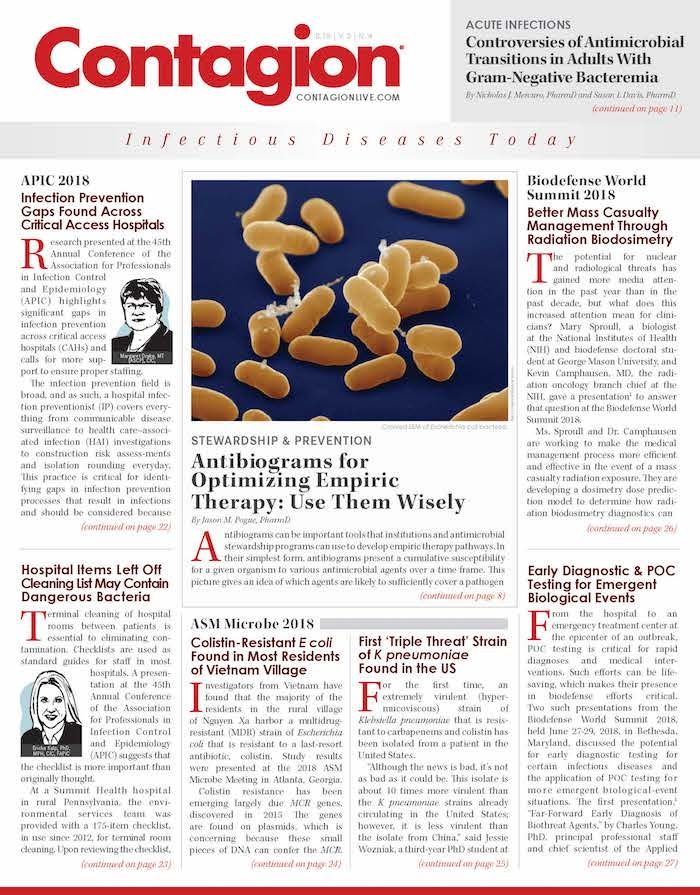Antibiotic Development—We Gave It a Push, Now It Needs a Pull
Contagion® editor-in-chief, Jason C. Gallagher, PharmD, FCCP, FIDSA, BCPS, affirms that the health care industry needs to hit the reset button on how antibiotics are developed.
After years of sounding the alarm about the dangers of limited antibiotic development, infectious diseases clinicians have been rewarded with multiple new antibiotics in the 2010s. To my shock, the Infectious Diseases Society of America’s “10x20” goal (10 new antibiotics before 2020) may actually be achieved. Changed regulatory pathways and “push” incentives that assist antibiotic development are partially responsible for the increased antibiotic throughput that we are benefitting from now.
However, the number of major pharmaceutical companies that invest in antibiotic development continues to decline, with AstraZeneca, Novartis, and Allergan recently announcing that they are leaving the anti-infective space. Allergan’s exit is particularly notable as the company markets several recently approved antibacterial agents that address critical needs. Antibiotics are a societal good that rely on private industry for production and the message that even selling approved, useful antibiotics that save patient lives is not enough to attract major drug developers to stay in the market is disheartening, to say the least.
What is going on? There are many issues, however, the main issue is that because private industry is for-profit, it gravitates toward therapeutic areas that make the most money. Antibiotics, which fulfill an acute need that most people do not have, are not one of those areas. Inexpensive generic antibiotics are currently effective for the majority of infections in the world, while branded, expensive antibiotics that fulfill a need, such as infections caused by carbapenem-resistant Enterobacteriaceae (CRE), are used in a very small number of patients. To put that in another context, 100% of the CRE market is smaller than 1% of the diabetes market.
And what happens when a new antibiotic is approved? We try not to use it to preserve its use for the patients who really need it, and shorten durations of therapy to decrease resistance, laudable goals that clearly do not incentivize further development. Life can be painfully ironic.
We need to hit the reset button on how antibiotics are developed and admit that our current model does not work. Push incentives are not enough. Although smaller pharmaceutical companies have picked up the pace of antibiotic development, without larger companies to partner with they may be headed for difficult futures, and new antibiotics that make it to the market and then fail are not helpful. “Pull” incentives are needed to encourage companies to get back in the game. Because antibiotics are not profitable, it is necessary to reward companies who develop these needed agents in ways that serve their interests.
The pull incentive that I like the most is that of an awarded patent extension for an agent of the company’s choosing. A company that develops an antibiotic that offers a true advantage in the treatment of a resistant infection, such as CRE, is rewarded with a 12-month patent extension for another product that they market. If you wonder if this will work, just think for a minute: What would it have been worth to Pfizer to extend the patent for Lipitor (atorvastatin)? Billions.
Congress is considering a bill, the Re-Valuing Antimicrobial Products Act, that suggests this pathway as a solution. In today’s challenging political environment, the bill faces an uphill battle, but it is an example of the type of out-of-the-box thinking we need to change the current paradigm of antimicrobial drug development. If the incentive is strong enough, it could be used to encourage many positive outcomes, such as deeply discounted anti-infectives, funding for antimicrobial stewardship, and developments in susceptibility testing that keep pace with approvals.
Whatever form our incentives take, it is clear that something radical is needed. Our unique system that relies on private companies to produce a public good is failing.
Note: We have combined coverage on viral hepatitis into other sections in our print publication. Continue to look for the latest infectious disease news on our website and social media channels (Contagion_Live on Twitter and ContagionLive on Facebook).
Jason C. Gallagher, PharmD, FCCP, FIDSA, BCPS
Editor-in-Chief
Contagion®

